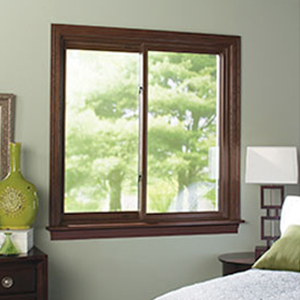Condensation is a sure sign that your home windows should be changed.
Windows are a crucial barrier between the harsh, variable weather conditions outside and our calmness, regular residence temperature levels. Home replacement windows quite often have a fifteen to twenty-year lifespan, so fortunately we don't need to think of changing them frequently. However knowing when it's time to replace them can be challenging. You could be tempted to try and hold out for another season if you recognize the warning signs. However changing your windows currently could help you extend the life of your entire house as well as keep you and your family members warm all winter season long. Here are a couple of indications that your home windows are not prepared for the harsh winter months this year.
Drafty Home
As home windows age, they begin shrinking, damaging, and not shutting correctly, allowing air from within your home to flow out. As a result of this, your HVAC system has a hard time to keep your house at a continuous temperature level and also sends your power bills skyrocketing. If your home is significantly extra drafty or your electrical bills seem to be rising this fall for no noticeable reason, you may intend to have your home windows had a look at.
Hard to Lock
We delight in having our windows open when the weather is nice, but they shouldn't be open all of the time. Throughout the winter and when we're away, your home windows must be shut in location and locked. Windows with malfunctioning locks is a major security threat that should be fixed immediately to maintain your household safe. Typically the lock can be fixed cheaply, however if the home window is having problem remaining open or shut or is leaking air, it might be best to simply install a brand-new one.
Condensation Forming
The most significant indicator that you need brand-new home windows is when condensation starts to base on the within your home window when it is closed and also locked. This is a measure of a most likely incurable problem and also must be addressed immediately to avoid the prospective development of mold and mildew in the framework, which can infect other areas of your residence and cause significant damage when left untreated.
Have you nearly had it with your old, breezy windows?
Is this the year you've determined to finally change your home windows? Changing your home windows with new ones comes with lots of benefits, consisting of a power performance boost, better ventilation, and much better quality of light in your house. The National Fenestration Score Council certifies and also classifies home windows (along with doors and also skylights) on their efficiency as well as energy performance. When you're purchasing new home windows you'll see these rankings on the NFRC tag. In this week's blog, we'll speak about ways to read this label to earn certain you're making an informed decision on your new home windows.
Warmth Gain and Loss
The first three buildings on the tag relate to just how the home window carries out when it come to warmth gain and loss. Windows gain and lose heat in three means:
Straight conduction via the glass.
Radiation of warmth from the sunlight right into your house, and also out of the house from objects in the house.
Air leakage through and around the window.
U-factor
This is "The rate at which a window, door, or skylight conducts non-solar warm circulation." The takeaway right here is "The lower the U-factor, the extra energy-efficient the window, door, or skylight."

Solar Warm Gain Coefficient
The SHGC tells us how much radiation is confessed with the window and also released as warm in the residence. The lower the number, the less warmth is transmitted. Nevertheless, this does not always imply you desire a reduced SHGC. For example, due to the fact that a greater SGHC suggests the home window permits Replacement Windows more heat in, you can enable a lot more solar warmth inside in the winter, which can reduce your heating requirements. In this instance, the climate you reside in will play a significant consider selecting an SHGC rating.
Air Leak
This quantifies what does it cost? air the home window lets in relative to a specific stress difference throughout it. The lower the ranking, the much less air leak.
Sunlight Passage
The next two rankings determine just how much light a home window lets right into your residence.
Visible Passage (VT).
This number between 0 and 1 procedures what portion of the range of noticeable light the window lets through. The higher the portion, the more light the window will permit. If you intend to use daylighting in your house, you'll want a greater portion. If you intend to reduce interior glare, you may want a reduced fraction.
Light-to-Solar Gain.
This number is the ratio in between the SHGC and the VT. "The higher the number, the extra light sent without adding excessive amounts of heat.".